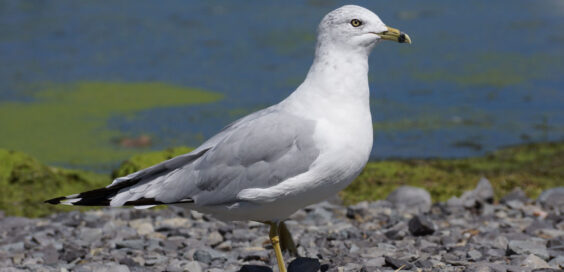
Creature Feature – Ring-Billed Gulls, Adaptive Survivors
Posted by Dustin Horton // August 29, 2022 // Articles, Creature Feature
Adult ring-billed gulls are gray and white gulls with yellow legs and a black band across their bill. These strong, agile flyers can be found in varying habitats. Coastal areas aside, they are common to inland water bodies and urban, suburban and agricultural landscapes. Indeed, many of these adaptive “seagulls” never see the sea! Chances are, the gulls you see canvasing a fast food parking lot are ring-bills as are those hanging around golf courses, marinas, and garbage dumps — hence their nickname, “Dump Chicken.”
Whether floating, flying or afoot, these gulls are on the look-out for something edible, be it fish or French fries. Mostly, though, they eat small fish, insects and other invertebrates. They also pluck berries, nab rodents, scavenge carrion, and steal food from other birds. In other words, ring-billed gulls are shameless survivors.
Nesting colony counts can number in the thousands. Nests are simple scrapes on the ground, lined with plant material. Both parents care for the young, which can fly at around 5 weeks. Colonies typically contain a small percentage of 2-female pairs, where each is fertilized by a random male and lays her eggs in a shared matriarchal nest. Most ring-billed gulls return to breed at the colony where they hatch. Many also return to the same wintering places in the south, using an internal compass to navigate, as well as landmarks and high-altitude winds to guide them.
Article & photo by Margie Manthey












